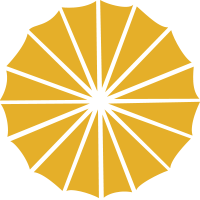My Son Sanctuary
My Son Sanctuary is set in a small valley belonging to Duy Phu Commune, Duy Xuyen District, Quang Nam Province, about 70km southwest of Danang City and 40km from Hoi An City. Of the 225 Cham vestiges that are founded in Vietnam, My Son possesses 71 monuments and 32 epitaphs, the content of which is still being studied.
History
The Cham Kingdom had two sanctuaries belonging to two main opposing clans. My Son of the Dua Clan, ruled over the north of the kingdom and was the place for the worship of God Srisana Bhadresvara. The Cau Clan, who reigned over the south had Po Nagar Sanctuary, dedicated to Goddess Po Nagar. Nevertheless, My Son was considered as the sanctuary of the Cham Kingdom.
The first constructions date back to the 4th century under the reign of Bhadravarman for the worship of God Shiva-Bhadresvara. But later on, the temple was destroyed. At the beginning of the 7th century, King Sambhuvarman had it rebuilt and rebaptized Sambhu-Bhadresvara. Each new monarch came to My Son after his accession to the throne, for the ceremony of purification and to present offerings and erect new monuments, which explains why My Son is the only place where Cham art flourished without interruption from the 7th to the 13th century.
Architecture in My Son
The temples in My Son were built into groups that basically followed the same model. Each group was comprised of a main sanctuary (kalan), surrounded by towers and auxiliary monuments. The kalan, which is a symbol of Meru Mountain (centre of the universe, where the gods live) is dedicated to Shiva. The small temples are devoted to the spirits of the eight compass points. In the towers, topped with tiled, curved roofs, were stocked the offerings and sacred objects of the pilgrims. Cham temples do not have windows, so they are very dark inside. Windows are only found on the towers.
Cham towers and temples are built of bricks associated with sandstone decorations. It is quite noteworthy that no adhesive can be seen in between the bricks, which is amazing since some of the works have survived thousands of years. The structures were built, and only then did the sculptors carve the decorations of floral patterns, human figures or animals. This technique is unique in Asia.
Every kalan in My Son is comprised of three parts: the bhurloka (foundations), the bhurvaloka (body of the tower) and the svarloka (roof).
The bhurloka represents the terrestrial world. It is decorated all the way round by engravings of patterns, animals, human characters praying under small vaults, masks of Kala or Makara (monsters), dancers, musicians…
The bhurvaloka symbolises the spiritual world where, after being purified, men could meet the ancestors and the gods. It is built with very thick bricks (about 1m thick), but its height can vary from one monument to the next. The outside is decorated with pilasters, false doors or windows.
The svarloka usually has three storeys in the same style as the base, and features a main door and other, false, ones. It is decorated with small sandstone or brick statues representing mythical animals, which are mounts ridden by gods in the Indian tradition: birds, swans, buffaloes, elephants or lions. There are small decorative towers at the corners of the 1st and 2nd storeys. This roof, made of sandstone or brick, can be either pyramidal or boat-shaped.
Methods used to identify and categorise the style of the My Son Sanctuary
In 1895, C. Paris, a French scholar, was the first one to clear the My Son Sanctuary. Then, many scientists came to My Son to study Cham epitaph, sculpture and architecture such as Henri Parmentier, C. Carpeaux, P. Stern…
Thanks to Henri Parmentier, the temples of My Son were classified into groups of letters (A, A’, B, C, D, E, F, G, H and K), and then numbered according to their functions. It starts with the main sanctuary, the kalan, (number 1), then the gate tower (number 2), and so on. Even though these categories break up the architectural complex of My Son as a whole, they are remarkably efficient for the study and maintenance of the ruins.
In December, 1999, at the 23th meeting of World Heritage Committee of UNESCO in Marrakesh, Marocco, My Son was recognised as world cultural heritage based on two prominent criterions: typical example about cultural exchange and unique evidence of disappeared Asia civilization
The Space of Gong Culture (The space of gong culture in Central Highlands of Viet Nam)
The space of gong culture in Central Highlands of Viet Nam covers 5 provinces of Kon Tum, Gia Lai, Dak Lak, Dak Nong and Lam Dong. The masters of gong culture are the ethnic groups of Ba Na, Xo Dang, M’Nong, Co Ho, Ro Mam, E De, Gia Rai… The gong performances are always closely tied to community cultural rituals and ceremonies of the ethnic groups in Central Highlands. Many researchers have classified gongs as ceremonial musical instrument and the gong sounds as a means to communicate with deities and gods.
The gongs are made of brass alloy or a mixture of brass and gold, silver, bronze. Their diameter is from 20cm to 60cm or from 90cm to 120cm. A set of gongs consists of 2 to 12 or 13 units and even to 18 or 20 units in some places.
In most of ethnic groups, namely Gia Rai, Ede Kpah, Ba Na, Xo Dang, Brau, Co Ho, etc., only males are allowed to play gongs. However, in others such as Ma and M’Nong groups, both males and females can play gongs. Few ethnic groups (for example, E De Bih), gongs are performed by women only.
As for the majority of ethnic groups in Central Highlands, gongs are musical instruments of sacred power. It is believed that every gong is the settlement of a god who gets more powerful as the gong is older. "God of gong" is always considered as the tutelary deity for the community’s life. Therefore, gongs are associated to all rites in one’s life, such as the inauguration of new houses, funerals, buffalo sacrifice, crop praying rite, new harvest, ceremony to pray for people’s and cattle’s health, ceremony to see-off soldiers to the front, and the victory celebration.
In Central Highlands, gongs are often performed in the form of orchestra. Gong orchestras adopt a natural sound-scale as the foundation for theirs. Depending on different ethnic groups, a gong orchestra can consist of 3, 5 or 6 primary sounds. However, as a polyphonic musical instrument, gongs often have some additional sounds apart from their basic ones. In fact, a six-gong orchestra can produce more or less 12 different sounds. So, gong sounds are heard resonant and solid. Moreover, a gong orchestra is arranged in a broad space, so the melody is formed by three-dimensional sounds with different pitch, length and resonance. It is the stereophonic effect - an original phenomenon of gong performance.
The space of gong culture in Central Highlands are heritage with temporal and spatial imprints. Through its categories, sound-amplifying method, sound scale and gamut, tunes and performance art, we will have an insight in a complicated art developing from simple to complexity, from single to multi-channel. It contains different historical layers of the development of music since the primitive period. All artistic values have the relationships of similarities and dissimilarities, bringing about their regional identities. With its diversity and originality, it’s possible to confirm that gongs hold a special status in Viet Nam’s traditional music.
On November 25, 2005 in Paris, France, the space of gong culture in Central Highlands was recognized by UNESCO as an oral-transmitted masterpiece and intangible cultural heritage of the humanity.
Other News
- Hoi An Ancient Town, A World Cultural Heritage Site
- Ha Long Bay
- Complex Of Hue Monuments
- Ca Trù Singing (Intangible Cultural Heritage)
- The Cultural Space of Gong in the Central Highlands
- Phong Nha Ke Bang National Park
- Nha Nhac Vietnamese Court Music
- Central Sector Of The Imperial Citadel Of Thang Long Ha Noi




